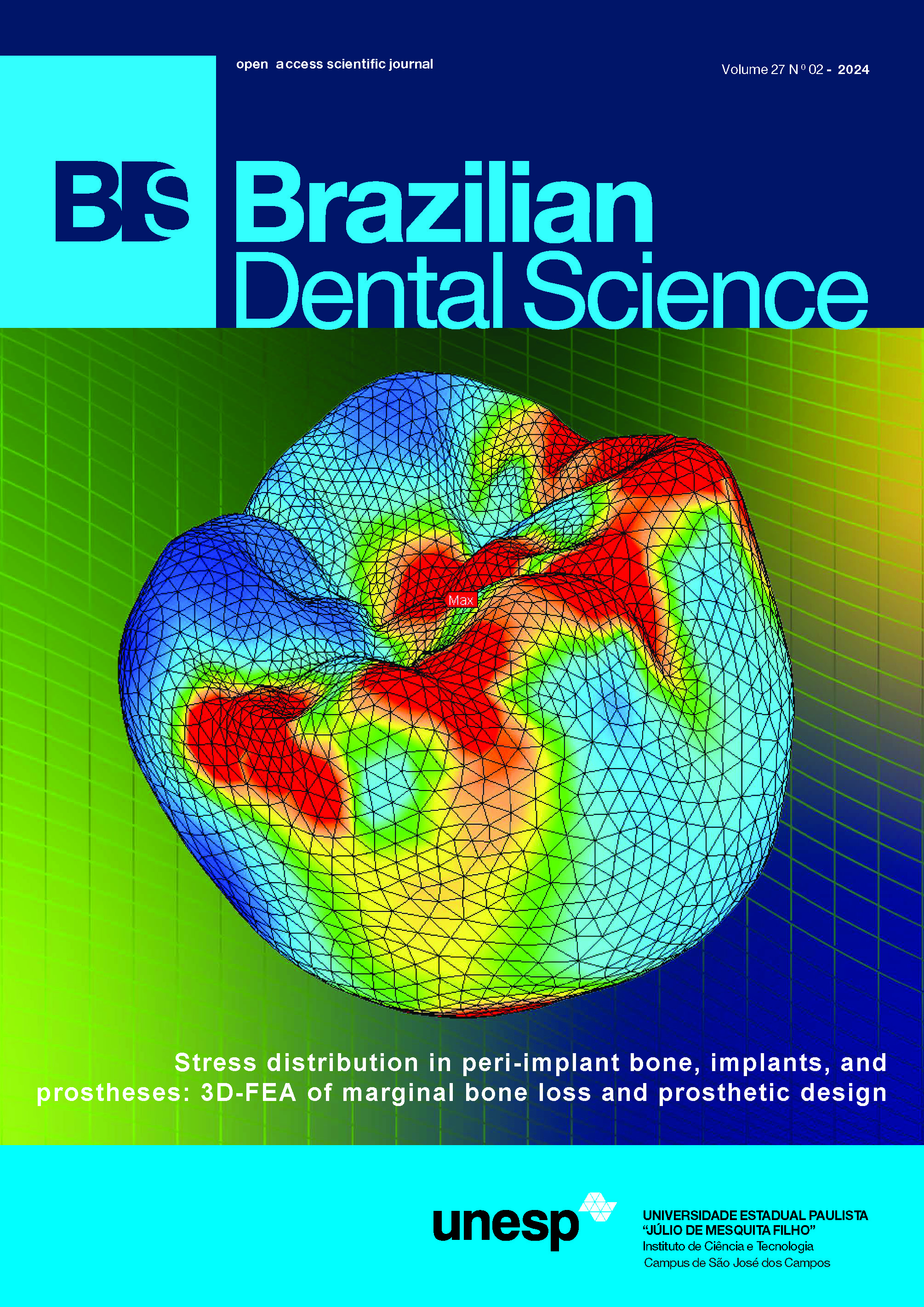Cytotoxic effects of bioceramic materials on stem cells from human exfoliated deciduous teeth (SHED)
DOI:
https://doi.org/10.4322/bds.2024.e4007Resumo
Objective: This study aimed to evaluate stem cell from human deciduous teeth (SHED) viability after exposure to different bioceramic materials. Material and Methods: Discs were constructed to obtain the material extracts according to the following groups: G1 - Bio-C Repair, G2 - MTA Repair HP, G3 - TheraCal LC, and G4 – Biodentine. Positive and negative control group were respectively maintained with alphaMEM + 10% FBS and alphaMEM + 1% FBS. SHED obtained through primary culture were in contact with material extracts for 24, 48, and 72h. MTT assay evaluated cell viability. Groups were plated in triplicate and the cell viability assay were repeated three times. Data were analyzed by two-way ANOVA followed by Tukey test (p<0.05). Results: The treatment and period comparisons showed statistically significant differences (p<0.000). G2 (MTA Repair HP) had greater cell viability values than the other experimental groups and negative control. MTA Repair HP and the control groups exhibited a similar behavior with cell viability values decreasing from 24h to 48h and increasing from 48h to 72h. Bio-C Repair, Biodentine, and Theracal LC did not show statistically significant differences among periods. Conclusions: SHED increased viability values after contact with MTA Repair HP in comparison with other bioceramic materials.
KEYWORDS
Cell viability; Cytotoxicity; Materials testing; SHED; Stem cells.
Downloads
Downloads
Publicado
Como Citar
Edição
Seção
Licença
TRANSFERÊNCIA DE DIREITOS AUTORAIS E DECLARAÇÃO DE RESPONSABILIDADE
Toda a propriedade de direitos autorais do artigo "____________________________________________________________________" é transferido do autor(es) para a CIÊNCIA ODONTOLÓGICA BRASILEIRA, no caso do trabalho ser publicado. O artigo não foi publicado em outro lugar e não foi submetido simultaneamente para publicação em outra revista.
Vimos por meio deste, atestar que trabalho é original e não apresenta dados manipulados, fraude ou plágio. Fizemos contribuição científica significativa para o estudo e estamos cientes dos dados apresentados e de acordo com a versão final do artigo. Assumimos total responsabilidade pelos aspectos éticos do estudo.
Este texto deve ser impresso e assinado por todos os autores. A versão digitalizada deverá ser apresentada como arquivo suplementar durante o processo de submissão.




























